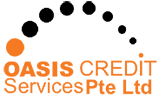Struggling to save for your dream vacation or simply wondering where all your paycheck goes? You’re not alone. Tracking expenses can feel overwhelming, especially with daily purchases, subscriptions, and payments. But here’s the good news—managing finances becomes simpler with the right strategies and tools.
Expense tracking isn’t just about cutting back; it’s about gaining clarity over your financial health. By understanding your spending habits, you can make informed decisions, set achievable goals, and reduce stress around money. Whether you’re a budget beginner or looking for a system to refine your process, this step-by-step guide will show you how to track your expenses like a pro.
Step 1: Choose Your Expense Tracking Method
The first step to taking control of your finances is finding the right method for tracking your expenses. This can vary depending on your preferences, lifestyle, and tech-savviness. Here are three popular options to consider:
Spreadsheets
A spreadsheet offers flexibility and control, such as those available on Excel or Google Sheets. If you enjoy customizing your budget categories and prefer hands-on involvement, this method is for you. Programs like Google Sheets even provide templates specifically for budgeting.
Benefits:
- Free and highly customizable
- Offers complete control over categories and data
Challenges:
- Requires consistent manual data entry
- It may be less appealing for those unfamiliar with spreadsheet tools
Budgeting Apps
Prefer a more tech-driven solution? Budgeting apps like Mint, YNAB (You Need A Budget), or PocketGuard are designed to simplify tracking. They automatically sync with your bank accounts, categorize transactions, and even send you alerts for unusual spending.
Benefits:
- User-friendly and automated syncing with accounts
- Offers insights into spending through graphs and charts
- Additional features like goal tracking and reminders
Challenges:
- Free options may offer limited functionality
- May require a slight learning curve for setup
Paper Tracking
If you prefer traditional methods, logging expenses manually in a notebook or planner is a classic option. This approach is helpful if you value the mindfulness of writing each purchase down.
Benefits:
- Improves financial awareness
- No tech knowledge required
Challenges:
- Time-consuming
- Harder to analyze spending patterns
Takeaway? Use the easiest to integrate into your daily routine, ensuring long-term consistency.
Step 2: Categorize Your Expenses for Clear Insights
Once you’ve chosen your tracking method, the next step is to organize your spending into categories. Categorization allows you to see exactly where your money is going and identify areas for adjustment.
Common Expense Categories
- Fixed Expenses (e.g., rent, loan payments, insurance)
- Variable Expenses (e.g., groceries, utilities, gas)
- Discretionary Spending (e.g., dining out, subscriptions, shopping)
- Savings and Investments (e.g., emergency fund, retirement)
- Debt Payments (e.g., credit card payments)
Tips for Effective Categorization
- Keep it simple with 5 to 8 main categories to avoid overwhelm.
- Use consistent labels so that you can compare spending month-to-month.
- Consider apps like Mint, which automatically categorize your expenses, or customize categories if needed.
Step 3: Set a Budget to Guide Your Spending
After categorizing your expenses, it’s time to set a budget for each category. The key here is creating a realistic spending plan for your priorities.
How to Set Budgets
- Review your historical spending habits to gauge appropriate budget amounts.
- Use the 50/30/20 Rule as a guideline:
- 50% for needs (essentials like housing and food)
- 30% for wants (entertainment, luxury)
- 20% for savings and debt payments
- Be specific. Rather than “groceries,” break down food budgets into categories like “fresh produce” or “dining out.”
Setting budget amounts creates structure, enabling you to avoid overspending without depriving yourself.
Step 4: Regularly Record Your Expenses
Tracking isn’t helpful if it’s not done consistently. Dedicate specific times to log your expenses daily, weekly, or bi-weekly. Consistency is key for staying on top of your financial goals.
Tools and Techniques
- Expense Notifications:
Apps like PocketGuard notify you of real-time transactions, making daily logging effortless.
- Weekly Financial Reviews:
Set aside 30 minutes every Sunday to review your logging and address missed entries.
- Calendar Reminders:
If you use spreadsheets or manual tracking, schedule reminders to avoid falling behind.
Integrating this habit into your routine ensures you’ll always know where you stand financially.
Step 5: Analyze Your Spending Patterns
Now comes the interesting part. After a few weeks of tracking, review your financial data. This analysis will help you uncover hidden spending habits and identify saving opportunities.
Questions to Consider
- Are specific categories consistently over budget?
- Are there any unnecessary expenses (e.g., unused subscriptions)?
- What percentage of income is going towards savings or debt repayment?
Tools for Insight
- Many apps like YNAB provide charts and visualizations for quick insight into spending trends.
- Use your spreadsheet’s filters or pivot tables to generate summaries of high-spend areas.
Spotting patterns helps you make meaningful changes, ensuring your spending aligns with your financial goals.
Step 6: Adjust Your Budget and Financial Habits
Expense tracking is not a one-time activity; it’s a continuous process. Adjust your budget as needed and refine your financial habits based on your analysis.
- Cancel unused subscriptions to free up extra funds.
- Explore cashback deals using tools like Rakuten or Honey to save money with minimal effort.
- If dining out is a culprit, challenge yourself to cook at home for a month.
Budgeting is about progress, not perfection. Minor adjustments can lead to significant long-term gains.
Take Control of Your Finances Now
Expense tracking may initially seem tedious, but it’s an invaluable tool for achieving financial goals. By following this structured approach, you’ll gain clarity, save more, and spend in alignment with your priorities.
Start your tracking today using the method that best suits you. If a guided, automated process sounds appealing, try one of the apps we mentioned, like Mint or PocketGuard.
Take charge, track smartly, and watch your financial confidence grow.
